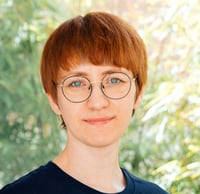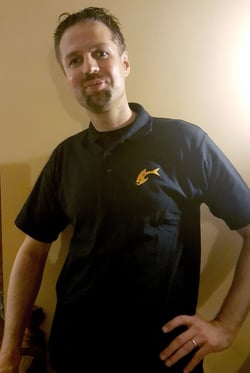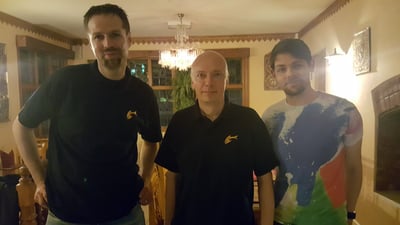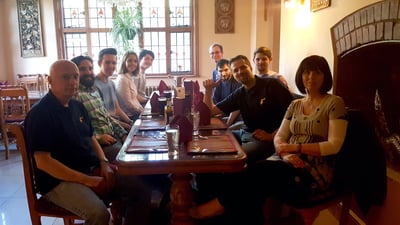Welcome to the Team - Arjan & Gaurav
Originally published on 10 Apr 2017
Last updated on 10 Apr 2017
 by Dominika Tasarz
by Dominika Tasarz
We’re very excited to announce two new Payara Team members - Arjan Tijms and Gaurav Gupta, who joined us last week!
I'm sure some of you recognise their names - both Arjan and Gaurav are passionate Java EE advocates and community contributors. Arjan is a member of the JCP, Founder of the OmniFaces project and the zeef.com website; while Gaurav is a NetBeans Dream Team member and a creator of Jeddict ( formerly known as JPA Modeler).
Read along to find out more about Arjan and Gaurav and what they’ll be working on at Payara.
Tell us a little bit about yourself – where are you from, what’s your background, what you specialise in?
 Arjan Tijms: I was born in Germany (Frankfurt), grew up in The Netherlands (near Amsterdam) and have British ancestry from my mother's side (near Burton upon Trent). For the ones wondering, my last name is pronounced approximately as "times". The "i-j" combination makes it into a slightly different sound in Dutch, but just the English "i' is close enough ;-)
Arjan Tijms: I was born in Germany (Frankfurt), grew up in The Netherlands (near Amsterdam) and have British ancestry from my mother's side (near Burton upon Trent). For the ones wondering, my last name is pronounced approximately as "times". The "i-j" combination makes it into a slightly different sound in Dutch, but just the English "i' is close enough ;-)
My background is firmly in programming and engineering. I started tinkering with basic and asm on the commodore 64 when I was about 6 or 7, and moved to C and C++ on the Amiga and SGI Indy later-on. I studied computer science at the University of Leiden and specialised there in high performance computing (grids, parallel computing, etc.) but also enjoyed a series of classes about AI. I played with Java ever since it came out, but started my first real job as a junior Java developer after I graduated from University. From there, I eventually grew onto a lead developer role, increasingly specialising in Java EE.
In 2012 I founded the OmniFaces project together with my friend and then co-worker Bauke Scholtz. A little while after I co-founded the zeef.com website and we joined the JCP, where I worked on JSF 2.3 and the Java EE security API.
I generally specialise in API design and architecture, but also in refactoring and code quality, so essentially both the broad lines as the tiny nitty gritty. Not sure if that still counts as specialisation ;)
Regarding Java EE, I obviously know some things about JSF and the security APIs, but I've used and debugged quite a few other parts of Java EE implementations as well, such as the various implementations of JPA, CDI and JMS.
 Gaurav: I am from India and I am 24 years old. My first contact with the Java language
Gaurav: I am from India and I am 24 years old. My first contact with the Java language
was around 2009 during my graduation, and I fell in love with it immediately.
I am NetBeans Dream Team member and passionate advocate of NetBeans, Java EE, and related technologies. I am a creator of the open source project Jeddict - 'The Java EE 8 code generation tool', formerly known as 'JPA Modeler'.
My passion is simplifying development tasks, boosting developer productivity and lowering development costs. I specialize in JPA, NetBeans Platform API, Reverse Engineering, API Design and Architecture.
What your role at Payara is going to be?
Arjan: I'm going to be a Technical Lead, which means I'll be overseeing things like releases (as a conductor of sorts, not so much as a manager), and will help shape the future of the product, for now specifically Payara Server 5.
Gaurav: I joined Payara as Principal Developer so I will be involved in enhancement and development of Payara Server, Payara Micro & Payara Microprofile.
How did you first hear about Payara?
Arjan: If you're only half involved with the Java EE community it's hard to not have heard about Payara. I basically heard about Payara the moment it was announced and looked at it right away. I started to become interested in it when it was clearly becoming a better GlassFish. For instance, there were some issues with the early GlassFish 4 series where it did not want to start up on OS X, and these issues were quickly fixed in Payara Server, but not in GlassFish. I submitted quite an amount of bug reports to the GlassFish JIRA tracker, but from some point on these just weren't being picked up anymore. The very enthusiastic and brilliant people that worked on GlassFish before kind of vanished from the public eye.
These bugs were however being picked up by Payara, who not only fixed them, but also did the integration of newer versions of the components that GlassFish uses (such as Mojarra, EclipseLink, Grizzly, etc). With no real new versions of GlassFish coming out and Payara Server being released every quarter (with snapshot builds available in-between for the adventurous hacker) Payara Server gradually became the go-to server for GlassFish users like me.
Things really started to become interesting when Payara started to incorporate enhancements of its own, like the JCache integration, the default role mapping that can be set in glassfish-web.xml, the advanced data source options in the standard data-source element in web.xml, and many more.
Gaurav: I think I probably read about Payara in a blog somwhere. Outside of my day-to-day job, since my graduation, I've been using GlassFish to experiment with new and upcoming Java EE technologies, for tooling support in NetBeans IDE. I really liked the GlassFish server but unfortunately in the last few years my experience with it was not so good. So then I switched to Payara Server and... woohoo! Applications were working smoothly without any issues.
What made you go that extra step to actually consider working for Payara?
Arjan: I've been involved with application servers as an application programmer for a long time, and I've been implementing some of the very components these servers use. Additionally I've been blogging about this topic, proposed many features for those components that got accepted and have been part of the discussion via channels such as mailing lists for a long time as well.
As such, the move to an application server vendor seemed like a logical one to me. There were several things to consider there, such as the server in question preferably being open source and using Mojarra. Eventually what swayed me to Payara was not only those little technical things, but the spark of excitement that seemed to be there around this particular server.
Gaurav: As a passionate advocate of Java EE, I wanted to work for a company which is well perceived by the Java EE community and Payara is one of those companies which, in my opinion, is leading and supporting the community.
Is there anything you’ve found out about Payara in your first couple of days here that you’re especially excited about, something that you’re looking forward to work on?
Arjan: Payara Server as an application server is a rather large project, and there are so many different things one could potentially work on. One particular interesting area that I just found out Payara is looking at revolves around cloud computing. I'm quite excited to add working on that to my list of responsibilities.
Gaurav: Payara Server is a really large project with many interesting modules to name a few. I am really excited about Payara Micro/MicroProfile and integration with different cloud platforms.
Are there any projects you like to get involved in outside of your day-to-day job?
Arjan: That's an almost endless list as well ;) Time is always the issue though, so the more projects you get involved with, the less time you can spend on each individually. Currently I'm involved with OmniFaces, Mojarra, Soteria and the Java EE 7 samples project. I like to write 2 books soon, one about JSF and one about CDI.
Gaurav: I like to help the Java EE community by providing the tooling support for surrounding and upcoming Java EE technologies in NetBeans IDE and Jeddict. I really hope to become more and more active in the Payara and Java EE community.
Any personal blogs or social media profiles you’d like to share with the community?
Arjan:
- my personal blog
- I'm mainly using Twitter via our OmniFaces handle
- and I'm on GitHub
Gaurav:
- my personal Twitter handle
- I'm on GitHub
- I am also using Jeddict Twitter handle for announcement of new releases, demos, tutorials etc.
Arjan – you visited the Payara Head Office in Malvern – how did you find your stay in our small English town? :)
Arjan: Absolutely fabulous! :D
Even though I've lived in a small town for some while (Bennekom, Netherlands) and my mother's family is originally from an even smaller town (Church Gresley, UK), I have to admit that I had some reservations at first about going to a small, perhaps somewhat remote town. But having been there I can only say that I absolute *love* the town. The place is simply beautiful and the people are very friendly. Steve (Millidge) took me out to a walk on top of the hills, looking out over to Wales, which was breathtaking. The small train station in Victorian style is also a sight to behold.
Alltogether I consider going to Malvern as an extra perk that comes with the already very interesting and exciting job!


Related Posts
JBoss EAP 7 End of Support: What Java Developers Need to Know (And What to Do Next)
Published on 15 Aug 2025
by Chiara Civardi
0 Comments
The Payara Monthly Catch - July 2025
Published on 31 Jul 2025
by Chiara Civardi
0 Comments

